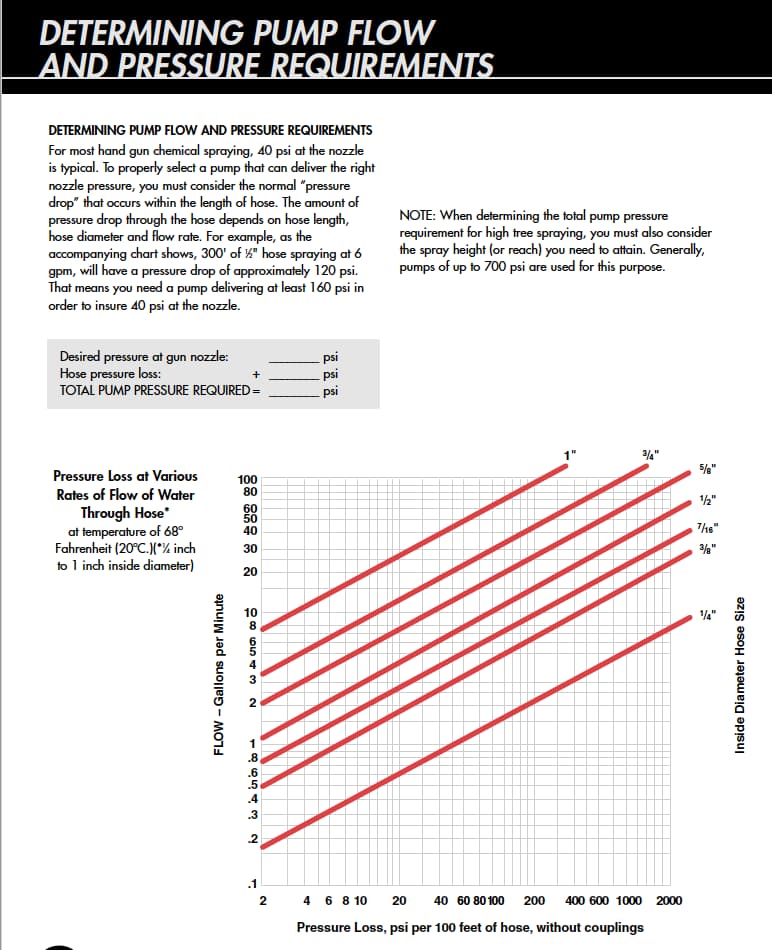Why Doesn’t My Pest Control Power Sprayer Pump Spray?
Posted by Andrew Greess on Dec 10, 2020
An Important Tip for Determining Power Spray Rig Pump Requirements
A while back I was asked a technical question on Facebook.
A pest control operator was not getting the performance he needed from a 12-Volt pump on his pest control sprayer.
He had gotten a variety of comments and advice from a number of people. The comments were of varying degrees of helpfulness.
I asked the guy what pump he was using, specifically pump output in flow rate (GPM - gallons per minute) and pressure (PSI – pounds per square inch), as well as what spray hose he was using (length and inside diameter - ID).
Here is what he provided:
12-Volt Shurflo Pump: 3 GPM, 45 PSI. 300’ of 3/8” hose.
I knew right away that the pump was mismatched with the hose. That pump does not have the power to push water through that hose.
How do I know that?
Here is a chart from Hypro Pumps that we use to help in developing specifications for power sprayer pumps on weed control sprayers, etc.
Source: Hypro Spraying Guide.
The chart shows the pressure loss for a give pump flow rate for different sizes (ID) of hose.
For the example above, the pump was 3 GPM so we find 3 GPM on the vertical (left side, Y) axis.
He was using 3/8” ID hose, so we move from 3 GPM on the left axis across until we hit the line for 3/8” hose. Where the 3 GPM and 3/8” hose intersect (meet), we drop down to the horizontal (bottom or X) axis. That is at about 40 PSI.
This means that for every 100’ of 3/8” hose at 3 GPM, we expect to lose about 40 PSI. Since in this example we started with 45 PSI, clearly this pump/hose combination will not work. I recommended that he replace his pupm with a higher pressure, lower flow pump.
A couple of interesting observations about this chart:
1. Pressure loss is greater at higher flow rates
2. Pressure loss is greater for smaller hose IDs.
3. This chart is useful when planning or designing a power spray rig.
4. If you know at what pressure you want to apply product, add that to the expected pressure loss through your hose to determine the total pump pressure required for your application.

There are other considerations when selecting a pump for your pest control spray rig or your landscape spray rig. For example, material being applied, agitation requirements, etc. that we can cover in future posts.
Comments?
Qspray now offers pesticides!


